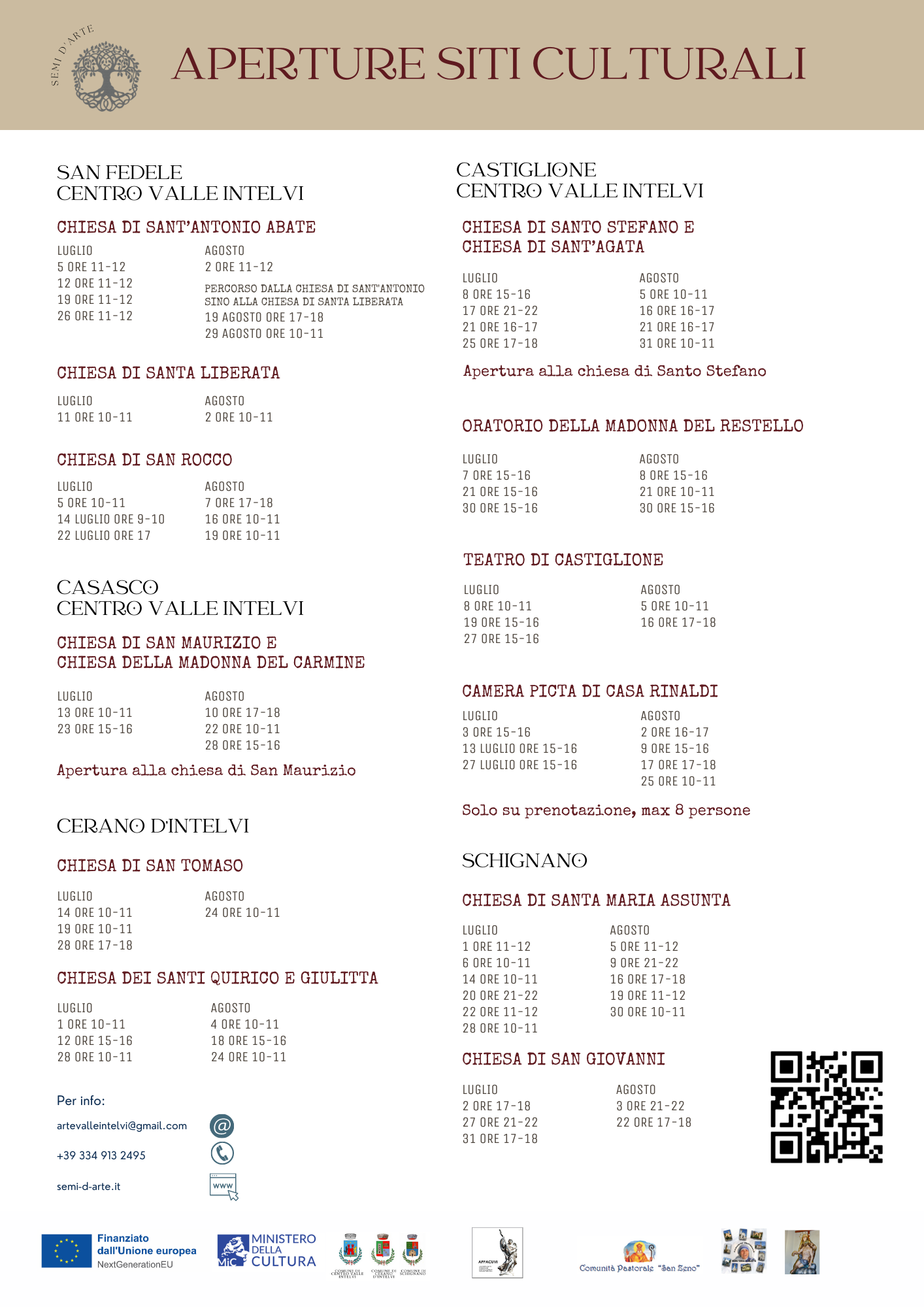Structural configuration: of Romanesque origin, the church was rebuilt in the 16th century with a gabled façade and a large stone portal surmounted by an aedicule with the stucco statue of the virgin with child.
The church, located in the lower part of the town in the “Ronco” area, has wooden doors embellished with precious carvings depicting masks and vegetal spirals.
From Bishop Niguarda's report of 1593 it appears that the building had been rebuilt; six years later bishop Archinti wrote that the walls had to be whitewashed and the roof lacked a ceiling, while the presbytery had a vault. Bishop Carafino in 1648 prescribed the provision of vestments and furnishings for the punctual celebration of mass; tasks pertaining to the confraternity of Carmelo, erected on 7 October 1604. The pious association probably used the room located behind the main altar for its meetings.
By 1684 the decoration of the presbytery had been completed with the imposing high altar featuring a statue of the Virgin with Child now placed in a niche on the right wall and replaced by a nineteenth-century statue in colored stucco. The beautiful vault features a fresco depicting the Glory of the Holy Spirit in a tondo framed by garlands of flowers in colored stucco supported by cheering cherubs and four stucco medallions frescoed with Old Testament episodes alluding to the Virgin and the Prophets. The Annunciation on the triumphal arch is attributed to Giuseppe Ferradini (1750) originally from Casasco. The statues of Saints Gerolamo and Rocco on the back wall, those of the Evangelists along the side walls and those of Saint Peter the Martyr and Saint Dominic near the triumphal arch were presumably created by 1635 by a plasterer close to the Retti di Laino family. Also valuable are the scagliola frontals of the side chapels, some of which (altars Schera And Ferradini) richly decorated with stucco and scagliole from the mid-17th century to the beginning of the following century.





